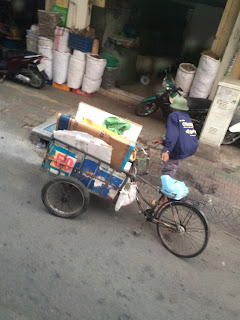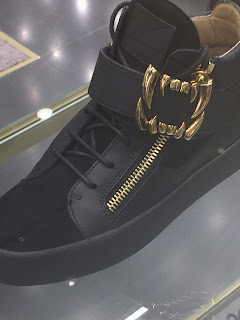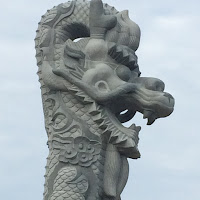ALFRED: Some people
can be defined with a single word. Daisy
(Zhongbei) Wu, Associate Director, Confucius Institute, and
Visiting Associate Professor, Performing Arts Department, Alfred University has
a long title but can be described with one word - teacher.
 Teachers often aren’t given the status
they deserve. Being
a teacher isn’t simple, not for a serious, dedicated teacher. Wu seems to be
such a teacher, a person whose heart and mind work together deeply to make the
best presentations possible for her students.
She has pride in their achievements and says she learns as much from
them as they do from her. They talk of cultural and music, speaking with words
as well as with the vibrating strings of the guzheng, a stringed instrument
developed nearly 3,000 years ago in China.
Teachers often aren’t given the status
they deserve. Being
a teacher isn’t simple, not for a serious, dedicated teacher. Wu seems to be
such a teacher, a person whose heart and mind work together deeply to make the
best presentations possible for her students.
She has pride in their achievements and says she learns as much from
them as they do from her. They talk of cultural and music, speaking with words
as well as with the vibrating strings of the guzheng, a stringed instrument
developed nearly 3,000 years ago in China.
People find their way to Alfred
through various routes. Wu told me that she was born in central China at the
end of the Cultural Revolution. Her parents were educated. Her father was a
scientist, a chemist and concert master in an orchestra. Her home was filled
with a sister, her mother’s tai chi and her father’s music.
From tender years, she played piano
and sang but when she was 9 her father decided that her life would be richer if
she studied the guzheng. Her fingers and her voice enveloped the instrument,
charming audiences. She won national and international awards for her
performances while still a child and though she thought she would follow her
father into the sciences he urged her to attend the Hunan Normal University
music program.
Wu’s father told her that music was
good for her and she was good for the guzheng. He was correct. After earning an
advanced degree, Wu had a successful career teaching music at Hunan University
of Commerce and as a guzheng performer but then her world was reshaped by the
birth of a daughter, Candy, and shaken by the sudden loss of her honored father
in 2008. Her sadness was intense. She
felt that doors had closed on her world.
In 2009, her husband, Edward Zhou,
professor of accounting at Hunan University, was given a 1 year scholarship for
study and research overseas and he thought that if the family moved to the US
it would involve so many changes, distractions and demands that Daisy would
find her sadness leaving her while new windows re-opened her world.
Wu agreed to a temporary move to the
US with her family so asked for a leave of absence from Hunan University. That
was when she became aware of the Confucius Institute. The Confucius Institute created opportunities
to teach Chinese culture, art and music overseas. In particular, the CI at
Alfred University needed a teacher and, since it offered a Business School
where her husband could study, it sounded just right.
It’s been a perfect fit. When Daisy
arrived on November 10, 2009, Dr. Wilfred Huang and his wife drove to the
airport and brought everyone to Alfred. She had just a day to settle in because
on November 12, she was scheduled to make a presentation at Nevins Theater, a
presentation made daunting because it would be in English.
In China, students study English from
grade 7 through college but studying English and speaking it aren’t the same.
Because she is a dedicated teacher, she spent hours practicing her presentation
and was bolstered by the warm reception given to her that day in Nevins. People
understood her and enjoyed her music.
Alfred has felt like home from the
start. She found friends, important work, membership in the Union University
Church and a Montessori school for her daughter, a toddler at the time.
At the end of that first year, she
performed at a Chinese New Year Gala in Alfred and then in 2010 began teaching
beginning guzheng to her first 7 students. The guzheng program has grown and
students can take both beginning and ensemble level courses in guzheng. Traditional
Chinese music has a 5 note scale and is written in a different sort of notation
using numerals, dots and lines but contemporary Western music can be performed
on it also.
Daisy Wu spent 5 years teaching at AU
under the umbrella of the Confucius Institute but is now a Visiting Associate
Professor in Performing Arts. In these years, her husband has earned a PhD from
Rutgers and Candy has attended Alfred Almond School while studying piano,
violin and clarinet.
Daisy Wu’s students have
blossomed. Under her tutelage, they
memorize the music. She said, “If you don’t rely on the paper, all the music
comes from your heart.”
As evidence of her superior teaching
skills and her spot-on philosophy, a trio of her students won the gold medal in
the 2016 Chinese Instruments International Competition in New York. The trio, Brandon-Charles
Miller, Tiffany Pham and Richard Lopez, were complimented on their technical
skill but more than that for their ability to interpret the story behind the
piece they played, The Warrior. These gold medal winners were the only
contestants who were not Chinese and didn’t have a life time of experience in
the Chinese culture. That’s impressive.
Brandon-Charles
Miller told me that Daisy Wu is his second mother and that she is a wonderful
teacher. She is not strict but students feel the need to please her because she
makes it clear that what they do is important to her. She has many ways of
explaining things to students so that no matter what a student’s background or
problem, she finds a way to make each person understand.
Daisy
Wu is an internationally recognized guzheng master but in Alfred she is much
more. She is the teacher.
BOX: The Confucius Institute is a non-profit, public
educational organization affiliated with China’s Ministry of Education. The aim
of the CI is to promote Chinese language and culture and promote cultural
exchange. The program began in 2004 and operates with affiliate colleges and
universities around the world with the majority in the US, Korea and Japan.
There are also Confucius Classroom programs that work in secondary school to
provide teachers and instructional materials. One goal is to promote the
Chinese language.
Search on Youtube for Zhongbei (Daisy) Wu to hear her perform
traditional pieces as well as her original compositions.
Here are some links.
Alfred University Guzheng Ensemble:"Swordsman"
https://www.youtube.com/watch?v=WbKuoDLkNwI
Zhongbei Daisy Wu 《Water 水 2015》on Guzheng
https://www.youtube.com/watch?v=gQCOILVHod0
Guzheng and Guqin: Layghing Over the Blue Sea
https://www.youtube.com/watch?v=bEc8dXF7jDE




















































